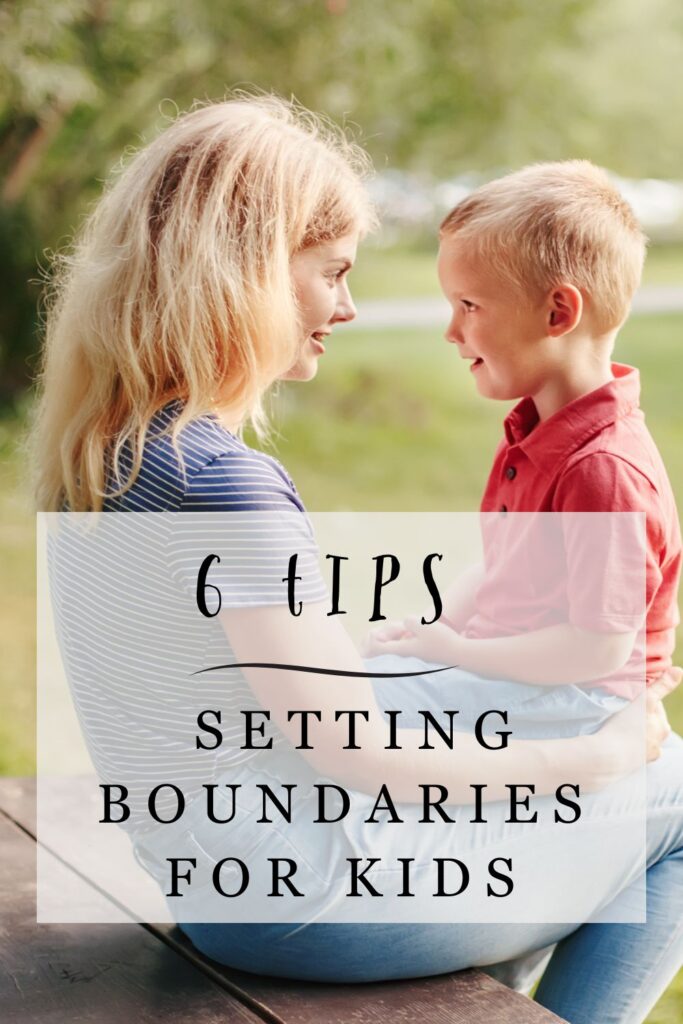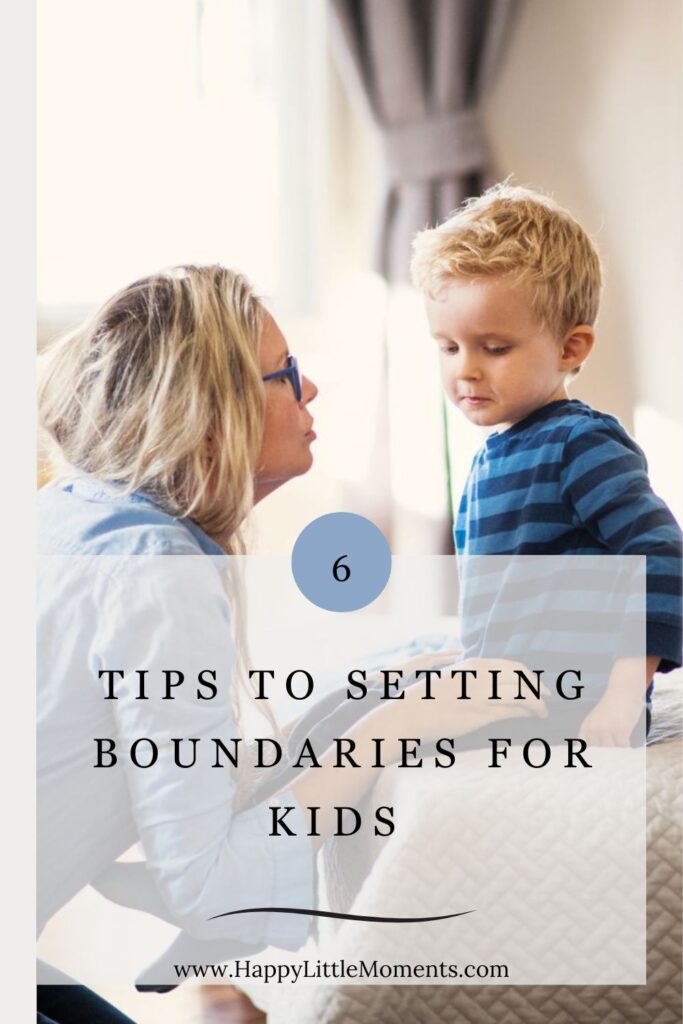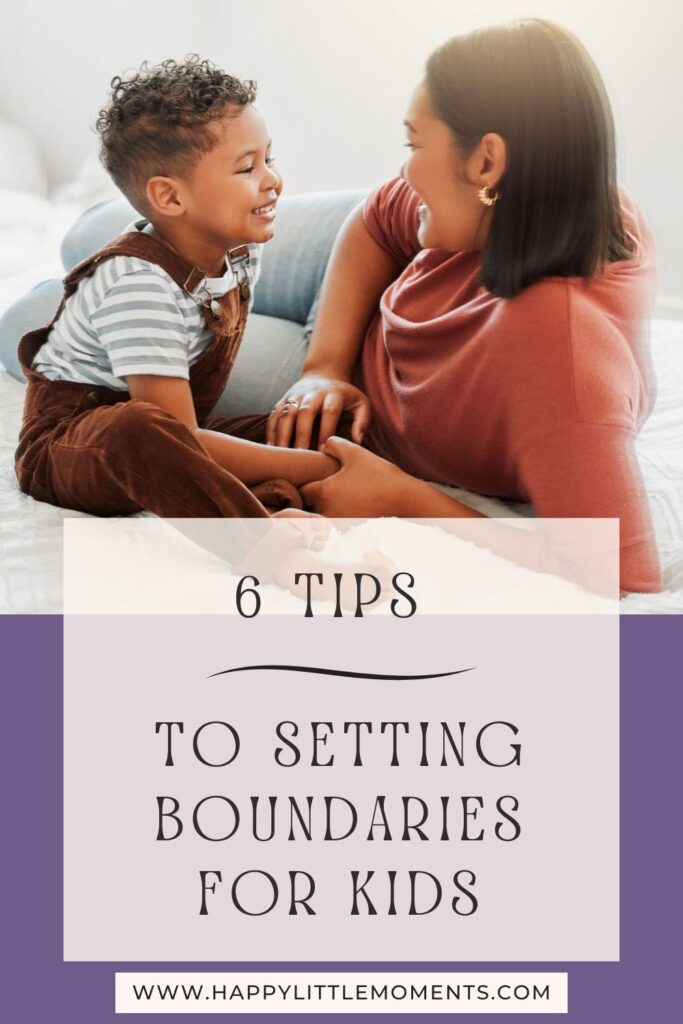6 Tips to Setting Boundaries for Kids
Parenting toddlers or preschoolers is like being on a rollercoaster—you never quite know what’s coming next. Setting boundaries for kids is a big part of this parenting early childhood phase. Just when you think you’ve got things figured out, your 2-year-old throws you a curveball, testing boundaries in ways you never saw coming. Suddenly, your sweet baby is pushing your limits, and you’re wondering what happened. The truth is, these little ones are hardwired to explore, test, and challenge. It’s how they learn about their world. They keep us on our toes, but that’s all part of the ride.
While there’s no one answer for dealing with all the tantrums, there are strategies that can help. The goal isn’t to “fix” your child’s behavior overnight but to manage those difficult moments. That way, you’ll hold boundaries that make your child feel safe, understood, and loved.
6 Tips to Setting Boundaries for Kids
1). Be Consistent and Clear
Young children aren’t pre-programmed to know the rules of the adult world. They’re still learning to process instructions—especially when instructions are complex or negative. That’s why you must keep your directions simple, clear, and consistent. Focus on telling your child what you want them to do rather than what not to do. For example, instead of saying, “No, don’t climb!” try saying, “Feet on the floor.” This helps them understand clearly and quickly what’s expected.
Consistency is also key. If you allow something once, your child will likely think it’s okay all the time. Make sure your boundaries are steady and always follow through with appropriate consequences when necessary. Your clear and predictable responses will help your child learn what’s okay and what’s not, setting the stage for better behavior in the future.
2). Model the Behavior You Want to See
Kids are natural imitators, and they learn by watching the people around them—especially their parents. So, it’s essential to be the example of the behavior you want to see. Show your little one how to be patient, kind, and respectful to others, even when it’s tough (and let’s be honest, it often is!). Parenting is the ultimate crash course in leadership, and it’s a chance to grow along with your child. Be mindful of how you react in challenging situations because your calm, steady response sets the tone for them.

3). Use Visual Cues
Kids thrive on routines, and visual aids like charts, chore cards, or routine pictures can make a world of difference. When we post a daily schedule, our kids know what’s happening next. This helps cut down on power struggles. They can see when snack time, homework, and TV time are, which helps with anxiety and keeps everyone on the same page.
Our 5-year-old has been working through some challenging behavior, and clip-up charts have been a game-changer. These charts give a clear, visual representation of how their day is going. Each day starts on green, and if behaviors like tantrums or hitting occur, their clip (we use clothespins) moves down to yellow or red. The colors make it clear when behavior needs improvement. Since kids naturally want to do well, they’re motivated to stay on green. It’s an easy way to track behavior and still keep things positive.
4). Explain the Why Behind Boundaries
Kids are curious, and they love to ask “why” about everything. Whenever you can, explain why certain rules are in place. For example, let them know why we keep our house clean, why shoes are a must outside, or why candy isn’t on the menu at 4:30 when dinner’s at 5:00. Giving these explanations help kids start to think about cause and effect and understand the reasons behind your requests.
That said, it’s also okay to strike a balance. While it’s great to explain the “why” most of the time, there are moments when “because I said so” is perfectly fine—and even necessary. Remember hearing that from your own parents? While it’s not ideal as a go-to response, sometimes kids need to learn to trust us without an explanation, especially in urgent situations. If your child is in the street, there’s no time to explain why—it’s just about immediate action.
Generations before us relied on “because I said so” because the world wasn’t child-proofed. Kids needed to follow instructions quickly for their own safety. Today, we’re fortunate that our world is much safer. But there are times when we need our kids to listen first and ask questions later. So, while I’m all for explaining the why, remember that it’s okay not to explain the “why” every now and then to help build that trust muscle. Finding a balance between explanations and directives helps keep your child safe while also helping them understand.

5). Set Expectations Before You Go
Whether you’re heading to a restaurant or grocery store, it helps to set expectations with your kids beforehand. Before you even get out of the car, go over the rules for where you’re going. In our family, we have different sets of rules depending on the destination. They are like mini guides for good behavior.
For example, when we’re going to a restaurant, we remind our kids of our restaurant rules: sit on your bottom, use your inside voice, talk to people at the table, and use your walking feet. It’s a simple way to set the tone and let them know what’s expected. We’ve also got parking lot rules (safety first!), airport rules, and yes, we even had to come up with church behavior rules—don’t ask me how that one came about!
Having specific expectations helps our kids know exactly what to do in different situations, which cuts down on meltdowns. Plus, it makes us all feel more prepared and connected as a team.

6). Stay Calm and Stay Firm
Young children love to test limits—it’s part of how they learn about the world. But more than anything, they want us to hold the boundary. It might seem counterintuitive, but kids feel safest when they know the adults in their lives are in control and consistent. Remember in the early days of COVID when everything felt uncertain and the rules kept changing? It was unsettling, right? Now imagine your child feeling that same kind of anxiety when boundaries aren’t clear or consistently enforced.
Especially if you have a strong-willed child, it’s important to remember who’s in charge. When kids push boundaries, they’re usually seeking one (or both) of these things: 1). your attention or 2). reassurance that you’re holding the boundary so they can feel safe.
If they’re acting out for attention, remember that kids see any kind of attention—even negative—as a sign of love. We all do some pretty crazy things to feel loved, and kids are no different. Make sure they’re getting enough positive, one-on-one connection with you so they don’t have to act out to get it.
And if they’re testing you because you’re not holding the boundary? That’s their way of begging you to step up. When you don’t enforce a rule you’ve set, it feels chaotic and unsafe for them. So, stay calm, be firm, and remind them—and yourself—that you’re the steady guide they need. Your consistency helps them feel secure and lets them know they’re in good hands.
Parenting During the Early Childhood Years
Parenting through the toddler and preschool years feels crazy and chaotic at times. But remember, every time you’re setting boundaries for kids, stay calm, or take a moment to explain the “why,” you’re not just managing behavior—you’re teaching your child important lessons about respect, safety, and how to navigate the world around them.
It’s not always easy and there will be days when nothing seems to work. But those little steps add up. Setting expectations, modeling the behavior you want to see, and staying consistent help your child feel secure and loved, even when they’re pushing the limits. Don’t forget to give yourself some grace, too. No other parent has it all figured out either, even if it may appear that way.
So keep showing up, keep trying, and know that you’re doing an amazing job. Parenting is as much about learning and growing as it is about guiding your child. Take it one day at a time, celebrate the small wins, keep setting boundaries for your kids, and know that you’re not alone on this wild ride of parenthood.
Save this Pin for later! Click below to save to your Pinterest account! Follow for more parenting and productivity content.



